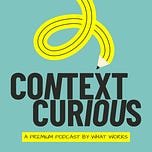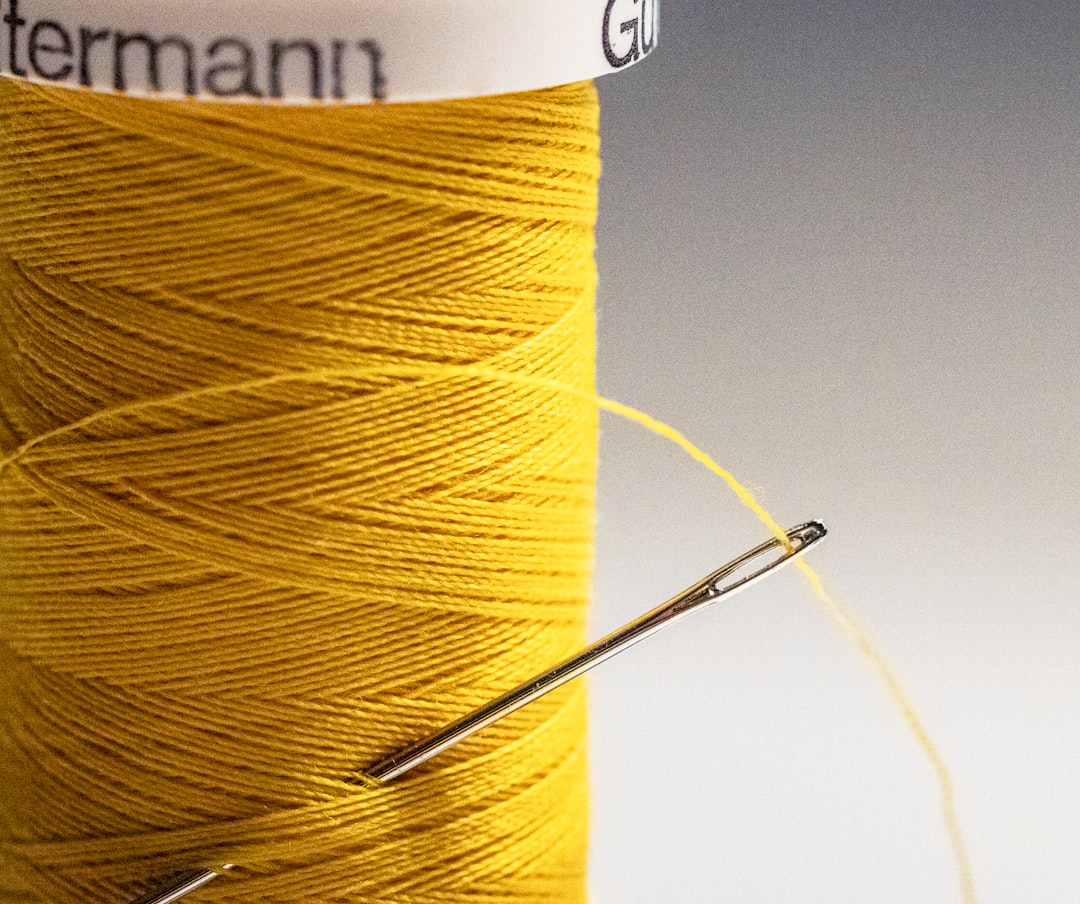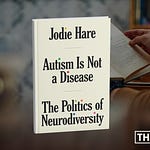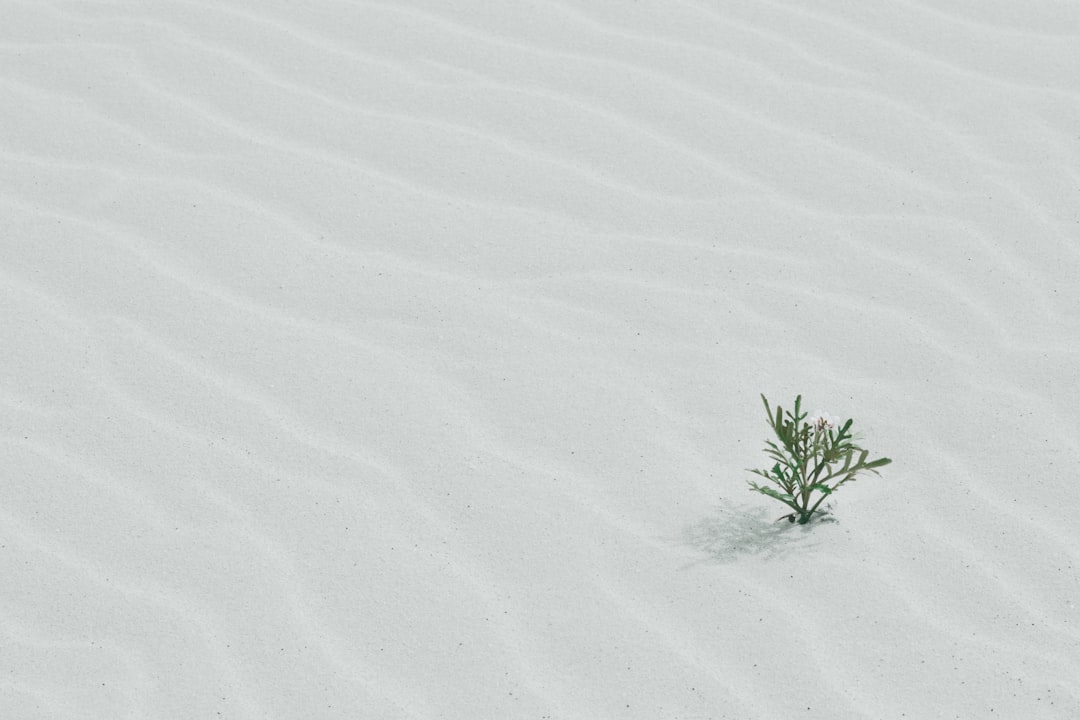This is the 6th edition of This is Not Advice. Typically, this column is reserved for premium subscribers. But I wanted to share this one in full with everyone. If you’d like to receive future editions, please consider upgrading for just $7/month.
And if you’re already a premium subscriber, thank you so much!

For this edition of This is Not Advice, I wanted to piggyback on the conversation I had with Jay Acunzo about social media generally and Threads specifically.
Part of the conversation that didn't make it into the main piece involved the ratio of how much creating versus consuming we do online. Jay told me that he spends 95% of his time on a platform either creating or engaging in his comments. He only spends 5% scrolling or consuming content. I mentioned some of the things I've read about the general vibe of Threads so far. And he replied, "When people write about it, I'm like, 'It sounds like you're spending too much time consuming content.'"
Jay, of course, is not alone in this opinion. I've seen it echoed by ConvertKit founder Nathan Barry on Twitter, among plenty of others. And I get it. Social media can be a time-suck. It's easy to get distracted by posts meant to bait or manipulate you.
But I do not share this opinion.
Jay had some thoughtful things to say when I brought up my concerns—and we'll get to those. I am in no way throwing him under the bus or saying he's doing it wrong. This is This is Not Advice, after all. We don't play that game here.
This essay is in two parts. First, I'll examine the value of immersing oneself in a community of craft. And second, I'll look at the gender dynamics at play in who is and isn't expected to create rather than consume. Finally, I'll wrap it up by considering whether we can go beyond the creating versus consuming dichotomy and see today's media landscape as a chance to practice a wide range of human impulses.
Part One: Communities of Craft
I'm currently reading a book of essays written by sci-fi and fantasy writer Ursula K. Le Guin. The first section contained mostly speeches she delivered to various writers' groups. The second section was made up of forewards she wrote for the reprinting of other people's books. And the third section is book reviews she wrote and published in various places. In other words, Le Guin was immersed in the world of writing, publishing, and reading.
Now, I have no idea how she split her time between reading and writing. But she certainly spent a lot of time reading.
Last month, I read Natalie Goldberg's Thunder and Lightning. This is a craft book—a book on the craft of writing. But in it, she writes at length about other people's work. The second of three parts is simply titled "Reading." She writes that she's often asked: "What do you need to do in order to become a writer?"
My reply is always the same, Read, especially in your genre, listen deeply and, of course, write.
In the same way an athlete studies other athletes or a musician listens to music, writers read. Goldberg continues:
If we read someone who is awake, it helps to wake us up. And think of it: while you read you’re not spending money, getting into a fight, creating karma. What better gift can you give yourself than to arrive in the present moment? I know no greater delight, and I have lived a rich, expansive life.
You might be thinking, 'But Tara, you're talking about capital-L Literature. Books are different from social media.'
That's true.
It takes quite a bit of time and attention to read books (which is well worth it, in my humble opinion). It takes much less time to consume social media. For the novelist or the essayist to consume a whole novel or essay, it takes exponentially more time than it does for a content creator to consume a social media post. Meanwhile, the novelist, essayist, and content creator are better served by investing that time in others' work. They learn better what works and what doesn't, what discursive threads they might wish to pull, and how they might incorporate new techniques into their work.
How we interpret the content form is every bit a part of the art as the content itself.
How we uphold or subvert the expectations of the form is part of our culture-making. This is as true for social media content as it is for capital-L Literature, fine art, or music.
The "social" aspect of the medium is key to its form—and how we might create with it. Social media aren't social simply because someone else can reply or leave a comment. Social media are social because they constitute a broader social infrastructure. They form collective conversation. Just because a speech act occurs on a platform designed to be "social" doesn't mean it's a work of social media. Without the social component, it's merely a copy of previous broadcast media.
The humble meme is a perfect example.
A meme is an artifact of social interaction and iteration.
A single image—no matter what text you layer on top of it—is not a meme in its true sense. An image and its blueprint for meaning become a meme when it's reproduced, reconsidered, and reworked by many people over time. Each iteration is a contribution to the collective conversation. And to fully understand the conversation, one must be part of it.
Okay, I've gone from capital-L Literature to "Look at this distinguished gentleman" in a matter of, like, three paragraphs. But capital-L Literature and viral TikTok sounds have more in common than just pretentiously affected British accents.
Writers of literature (or of anything, really), canny Instagrammers, astute podcasters, and savvy TikTokers recognize that we create not as solitary geniuses but as custodians of story, knowledge, and culture's building blocks. We remix, edit, and translate rather than generate the illusive Original Creation. We read, watch, and listen to what others create to gain new ways of formulating what we want to say.
At the risk of making an overly generic, categorically definitive statement, I'll go so far as to say: great creators consume what others create so that they can become greater creators.
I didn't mean for that to rhyme.
Still, you might be wondering, isn't social media different? Is there really value in exposing yourself to that kind of brain-rotting knee-jerk verbal vomit?
Look, people make bad art in every medium.
There are bad paintings, bad music, bad books, bad journalism, bad podcasts, bad movies... But that doesn't mean we throw out the whole medium. We find the art that means something to us (whether it's praised critically or not), and we engage with that.
When social media platforms started to emerge, they gave us a new medium and fresh forms to create with—the 140-character post, the live video, the square image, the status update, etc. And part of what made the forms in this medium new was that the observer was no longer at a remove. You didn't post a status update to Facebook and wait to see what the critics said the next day in the paper. Your friends, family, and strangers could immediately engage with what you shared. But it doesn't stop at likes and replies. Perhaps the most social of social media inventions is the personal tag.
The @reply convention goes back to before the social media age. But when Twitter started to build features around the convention, the platform got a whole lot more social. It wasn't only that linked @replies created a two-way conversation. They also allowed users to build off of each other's work. You could reference someone else's work as you put out your own work. It became a type of citation—a nod to those who were part of the lineage of your work.
And sure, tagging has been thoroughly abused—but that doesn't change the way it helps to define what social media are.
Here is where I think Jay and I reach a philosophical impasse.
For me, the point of creating social media is to be in conversation with other social media creators, both directly and indirectly. I want my posts and newsletters to relate to the posts and newsletters that others are putting their time and attention into. I see my work as part of a larger discourse between many thinkers, writers, and practitioners—rather than a service I perform for the people who subscribe or follow me.
But for Jay, the point of creating social media seems to be different. I'm hesitant to speak for him, of course. So here's (part of) what he said when I pushed back on his allocation of time and expressed concern about how social media users post and run rather than participate in the broader conversation:
There was this, like, old principle of the internet. I forget who came up with it early on. It was like the 99-1 principle. Like 90% are lurkers. 9% are kind of casual users, commenters. And then 1% are the creators, the publishers, the people creating content. And I think that holds true and maybe even has gotten worse.
I believe this is true—that 99% of people using social media apps are, at most, casual commenters and posters. They're not capital-C Creators. They're not trying to build an audience, or generate a professional portfolio, or demonstrate their skill at this, that, or the other thing. And I agree that most of my audience is not other Creators either.
But my question—which, to be fair to both of us, I actually stopped asking to let him jump in—wasn't so much about followers. It was about the state of the discourse. It was about what happens when we're not plugged into the medium in which we're creating. It was about what happens if Creators are increasingly convinced to stick their fingers in their ears and say, "la la la la la, I can't hear you!"
And I’d argue that what happens is exactly the reason many of us are so over social media.
It’s not that Jay is disconnected or not listening. Jay conscientiously and generously devotes himself to getting to know people outside of social media spaces. And he does this with much more skill and care than I ever could. I think this strategy works—to a degree. Getting to know people personally is different from immersing yourself in the community of your craft.
Jay leads his own community of craft—the Creator Kitchen—with content strategist Melanie Deziel. He is immersed in that community of craft—which has its own immense value. But from my own experience in both public social media and leading a private community, it's not the same. You can gain valuable insight from a paid, private community, and the insight you gain from engaging with the broader discourse is a different beast. The social context of a private community is just too siloed and self-selective to give you real taste for what's happening beyond its digital walls.
As I mentioned, Jay is far from the only person to advocate for allocating the vast majority of time to creation over consumption. Having observed this stance become more and more popular since, say, late 2016, I've had the nagging suspicion that there is something about it that is gendered. And I want to tease that out now.
Part Two: Performing Gender on Social Media
Note: I'm going to make some gross generalizations here. Gender performance is, perhaps, even more fluid online than off. What I'll describe are my own observations over 15 years on social media, plus my own experience as an autistic cis woman who often presents with more masculine energy. Keep in mind that race and class (among other categories of identity) also exacerbate or mediate these effects.
Care-Mongering
Philosopher
uses the term "care-mongering" to describe the way that women are penalized for not meeting inordinate expectations for caring. She cites a study that shows that college students tend to hold male professors to higher standards of engagement (i.e., they're more likely to be rated as boring) and female professors to higher standards of care (i.e., they're more likely to be rated as "cold, uncaring, or not developing a personal relationship with each and every student").I don't think it's a stretch to extrapolate these findings into the world of social media. Male-coded social media accounts might be expected to "wow" their followers with tips, tricks, and insights. While female-coded social media accounts might be expected to demonstrate care and concern through their constant presence on the apps.
Perhaps the worst sin a male-coded account could commit is being "boring," while the worst sin a female-coded account could commit is to be "cold and uncaring." I'd be lying by omission if I didn't tell you that being labeled "cold and uncaring" online is one of my biggest personal fears—and absolutely shapes (and often chills) what I choose to say and create.
Care-mongering is a form of misogyny. By exerting social pressure on women and woman-identifying people to demonstrate excessive caring, care-mongerers keep the impact and influence of women to a minimum. Again commenting on student evaluations of male and female professors, Manne writes:
For, while a man’s not being boring will scale with relative ease to a larger audience, a woman’s developing a relationship with each student obviously won’t. And, beyond a certain point, it will simply not be feasible.
Any attempt to compare the size or influence of different social media accounts is, of course, an exercise in comparing apples to oranges. But I think it's within reason to say that "wowing" one's followers with tips and tricks scales better than trying to answer every DM, comment, and email with utmost care. And women and woman-identifying people are often tasked with both the “wow” and the care.
The potential of care-mongering isn't a reason to bend to its demands, of course. And it isn't a reason to devote oneself to fully participating in social media spaces. But the potential of care-mongering does warp women and woman-identifying people's experience online—and, therefore, what we create.
Some rebel against it; others lean in.
Meanwhile, men learn to channel the genius aesthetic to gain attention.
Genius Aesthetic
...there is a weird (and acknowledged) tendency here to treat an effort like architecture, which by definition requires a group and—dare I say it—collectives, as though it were the art that an individual makes in the solitude of a studio or a favorite writing nook. This is what historians of ideas call a “genius aesthetic”: it describes our tendency to think that the meaning of a work of art comes out of the specific mind of its creator, not out of the preexisting rules that creator worked within nor the broader spirit of the society and time.
— Adrian Daub, What Tech Calls Thinking
American capitalism has a long history of ignoring the collective effort required to build what we deem "genius." Capital systems work best when the effort of workers is deemphasized, and the product (and its spoils) can be attributed to one man.
We might put the genius aesthetic at the other end of the spectrum from care-mongering. While women must exert visibly excessive levels of care to gain acceptance, men are often rewarded for the opposite. In this case, the opposite of excessive care isn't excessive uncaring. The opposite of excessive care is a sort of proud disconnection from the collective. It's solipsistic disinterest in the cultural community one is a part of. The genius aesthetic gestures broadly to human potential and the good of humanity—but eschews relationship with the community.
Look no further than Elon Musk’s vision for humanity’s bold future on Mars and beyond—while deliberately ignoring the plight of the communities he inhabits today and those he wishes to leave behind.
Men are allowed to articulate a bold vision for the future—while women tend the hearth fires of social engagement.
In his book What Tech Calls Thinking,
demonstrates the genius aesthetic at work within the tech industry—with social media companies taking center stage. He points out the stark hierarchy between the platform founders and those who create the content that actually allows the platforms to make money. Platform founders, all men, rule the world. Those who supply the content are merely "users."What I've observed over the last five to eight years, though, is that this stark hierarchy is recreating itself among the content creators themselves. Some creators, predominantly men but not exclusively, align themselves with platform founders more than the common (feminized) user. Their method of content creation is masculinized—oriented to themes of success, domination, discipline, and autonomy. And the content itself is made to stand apart from the wider discourse (see also: threadbois).
This masculinized form of content creation is perceived as more valuable, more authoritative, and, dare I say, morally superior to feminized forms of content creation. Feminized content creation tends toward the self-reflective, co-creative, and consensus-building. Masculinized content is active, feminized content is passive.
In this way, I think it's possible to see the consumption of social media as a form of reproductive labor.
Reproductive Labor
Both theorists and economists make a distinction between productive labor and reproductive labor. Productive labor is labor that produces value in the form of goods and services. Reproductive labor, on the other hand, is labor that reproduces labor power—most often other people's but also one's own. In its simplest terms, you might think of productive labor being the work you do for your job and reproductive labor being the work you do to get ready for the next day on the job. It's a bit more complicated than that, but you get the idea.
The Fordist conception of work and family had a male head of household doing the productive labor on behalf of his family, while the female "homemaker" did the reproductive labor of getting him ready for the next day of work. We've certainly seen greater parity in this division of familial labor over the last 40 years, but there are many aspects of it that still hold sway.
I can't help but draw a parallel between masculinized productive labor and masculinized content creation. Men used to spend the day at the factory making stuff. Today, men spend the day filling their social media scheduler with profound insights. Men used to come home to a clean house, stiff drink, and dinner on the table at 6pm. Today, men receive the likes, comments, and shares that refresh their creative drives.
This analysis is purposefully reductive. The way we perform gender in our online work is endlessly variable. The gender dynamics of any particular platform or subgroup on a platform inevitably deviate from this pattern. And yet, I still think this analysis is useful in understanding the expectations we hold ourselves and others to online.
Beyond Creating Versus Consuming?
In the end, our contemporary notion of creating and, with it, the oft-praised creativity are inventions of capitalism. We've learned to venerate the 'creative person' because they represent this ideal form of value-producing worker. Samuel W. Franklin traces the cultural history—an unexpectedly short one—of creativity in his book, The Cult of Creativity. He writes:
The development of the concept of creativity by psychologists and creative thinking experts allowed for the emergence of a new form of subjectivity, the creative person. The creative person was a producer in a world of consumers.
The content creator is a producer in a world of content consumers.
The moral value communicated here is clear. Do you want to be part of the 1% or part of the 99%? Franklin closes the book on an expansive note. He doesn't argue to get rid of the category of creativity, of course. He argues that we need both a more expansive and less extractive notion of what creativity is—and that we need to recognize the equal value of other human pursuits. He writes:
The notion that creativity is what makes us human is both toothlessly vague and far too limiting, especially if it makes us think of other very human impulses—to care, to maintain, to collect, to reuse, to copy, to fight, or even to follow—as less relevant.
"To care, to maintain, to collect, to reuse, to copy, to fight, or even to follow" is a good way to sum up ways of participating in social media beyond creating. And maybe when it comes to how we spend our time online, we stop thinking of it as a choice between creating and consuming and start thinking of it as a canvas on which to explore a multitude of human impulses.














Share this post